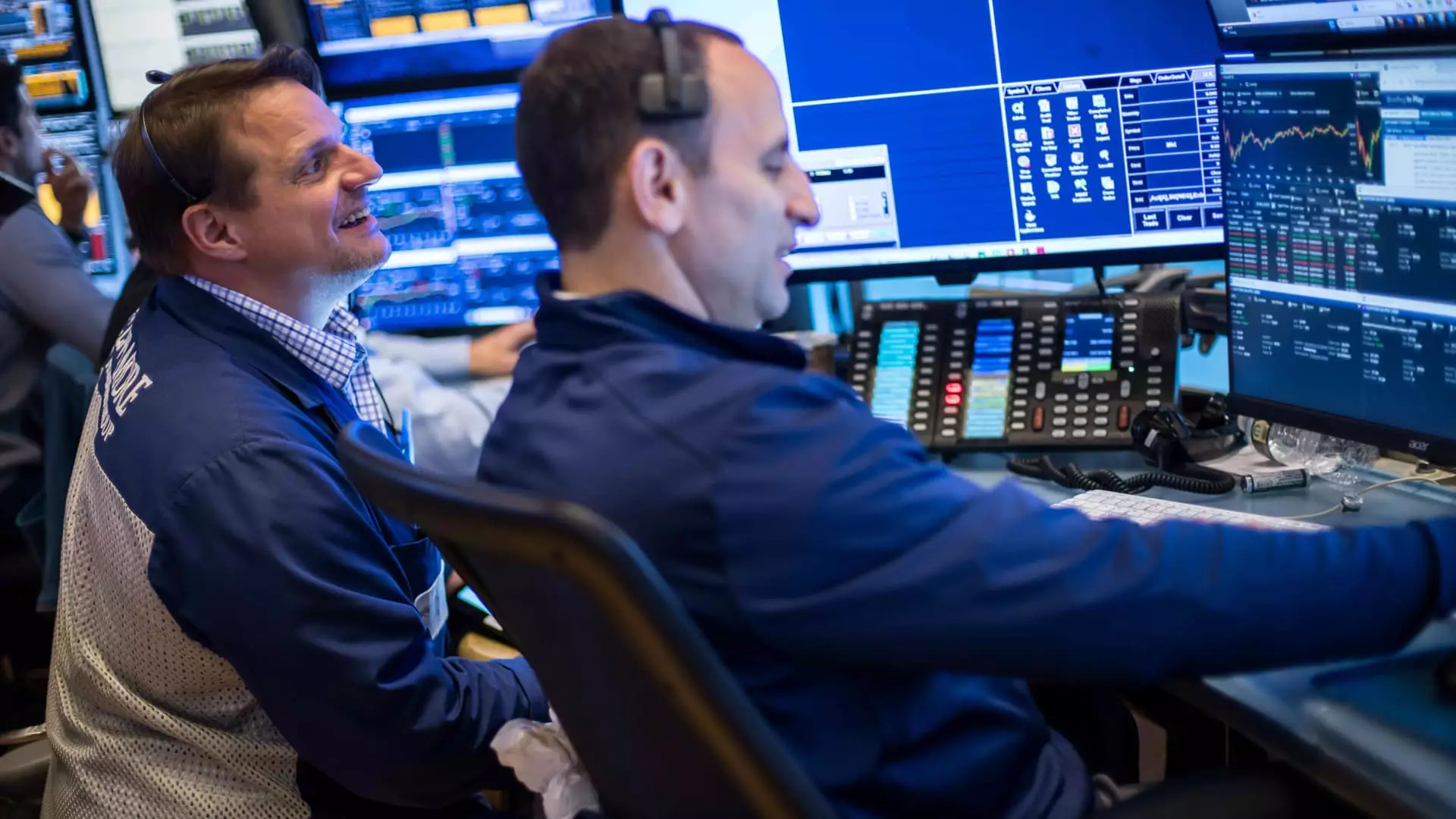A recent surge in stock prices has reignited some optimism among investors, showcasing the complex dynamics underpinning the U.S. economy. On the heels of the latest nonfarm payrolls report, which revealed the creation of 139,000 jobs in May—outpacing expectations—markets reacted positively, with the Dow Jones Industrial Average climbing over 400 points. However, this spike in market indices belies a much deeper malaise that investors and policymakers must grapple with. The notion that a single report can invert prevailing fears of an economic slowdown is not only simplistic but teeters on the edge of recklessness.
While the figures, confirmed by the Bureau of Labor Statistics, initially suggested resilience within the labor market—holding steady with an unchanged unemployment rate of 4.2%—they must be scrutinized with a discerning eye. The less than stellar jobs figures from April, along with a marked decline in private sector payrolls reported by ADP, cast a shadow over the seemingly bullish narrative. Moreover, the true state of the labor market may be shrouded by underemployment and stagnation. Thus, while the rise in stock prices following the payrolls report might signal a momentary sigh of relief, it is crucial to question whether this surge reflects genuine confidence or merely a fleeting emotional reaction to data that is, at best, mixed.
Fragmented Economic Signals: Caution Urged
Despite the jubilant stock market response, a careful inspection of recent economic indicators paints a much more convoluted picture. Earlier reports indicated rising unemployment claims, suggesting that the economic road ahead may be less stable than the glowing jobs report would imply. Concerns regarding the multi-front tariff negotiations add additional layers of complexity, leading market analysts to wonder about the longer-term implications these trade tensions may have on growth and inflation.
Anthony Saglimbene, chief market strategist at Ameriprise, noted that “there’s still some uncertainty about what the inflation impacts are going to be from the tariffs.” These uncertainties only further complicate the landscape. Far from being in a position of unbridled growth, the economy’s trajectory remains a fragile one, impacted by external geopolitical factors that are not easily predicted or controlled.
Investors, specifically those in the tech sector, have recently experienced a rollercoaster ride. The substantial decline earlier in the week of major tech player Tesla, followed by its subsequent rally, is emblematic of a market grappling with extremes. The volatility exhibited by Tesla, particularly following public feuds between high-profile leaders like Elon Musk and former President Donald Trump, reminds us how closely intertwined market performance is with individual perceptions and public narratives. It’s not just about numbers; it’s about confidence—confidence that is remarkably fragile.
The Challenge for Policymakers and Investors
As the Federal Reserve prepares to meet on interest rate policies round June 17-18, the challenges ahead become increasingly apparent. The findings from the payrolls report, while better than expected, are unlikely to provide the Fed with enough ammunition to ignore the looming threats of economic slowdown. With such discordant signals trickling out of the economy, the question looms: how will officials manage the complexities of an environment filled with uncertainty—all while trying to stave off an economic downturn?
Investors must find a balance between caution and optimism, searching for tangible signals while grappling with the emotional aspects of market behaviors. The urge to interpret positive data points as a cue to invest more passionately may cloud judgment, especially when the underlying fundamentals signal fragility. The reality is that economic indicators can be as misleading as they are revealing, and as we have seen in recent months, they can turn on a dime.
In navigating this landscape filled with uncertainty and emotional volatility, it is crucial for both investors and policymakers to adopt a rigorous and analytical approach. Emphasizing informed, data-driven decisions rather than allowing psyche and speculation to dictate actions is the only way to weather the storm that may lie ahead. Investors should pay heed to the broader trend of economic indicators and remain vigilant—because while the markets may appear buoyant today, tomorrow could very well bring a different reality altogether.


Leave a Reply